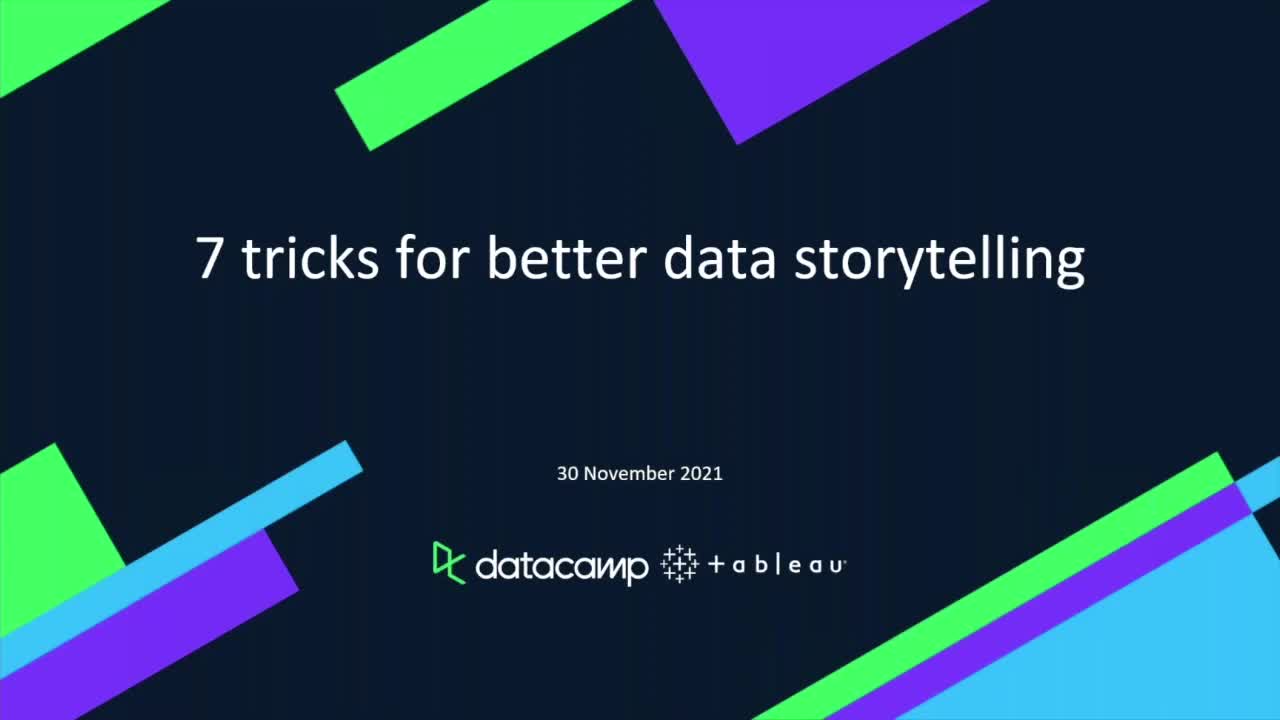Altavoces

Andy Cotgreave
Senior Data Evangelist at Tableau

¿Entrenar a 2 o más personas?
Obtenga acceso de su equipo a la biblioteca completa de DataCamp, con informes centralizados, tareas, proyectos y másRelacionado
white paper
8 Rules for Better Data Storytelling
8 Rules for Better Data Storytellingwhite paper
8 Rules for Better Data Storytelling
8 Rules for Better Data Storytellingwebinar
Seven tricks for better data storytelling with Tableau
Learn 7 tricks to become a better data storytellerwebinar
8 Rules for Effective Data Storytelling
Best practices for crafting actionable data stories that drive business impact.webinar
Storytelling for more impactful data science
Storytelling enables data teams to formulate impactful aspects of their work.webinar
Driving Impact with Data Storytelling
Eight best practices you can adopt right now to become a better data storytellerJoin 5000+ companies and 80% of the Fortune 1000 who use DataCamp to upskill their teams.
Loved by thousands of companies
